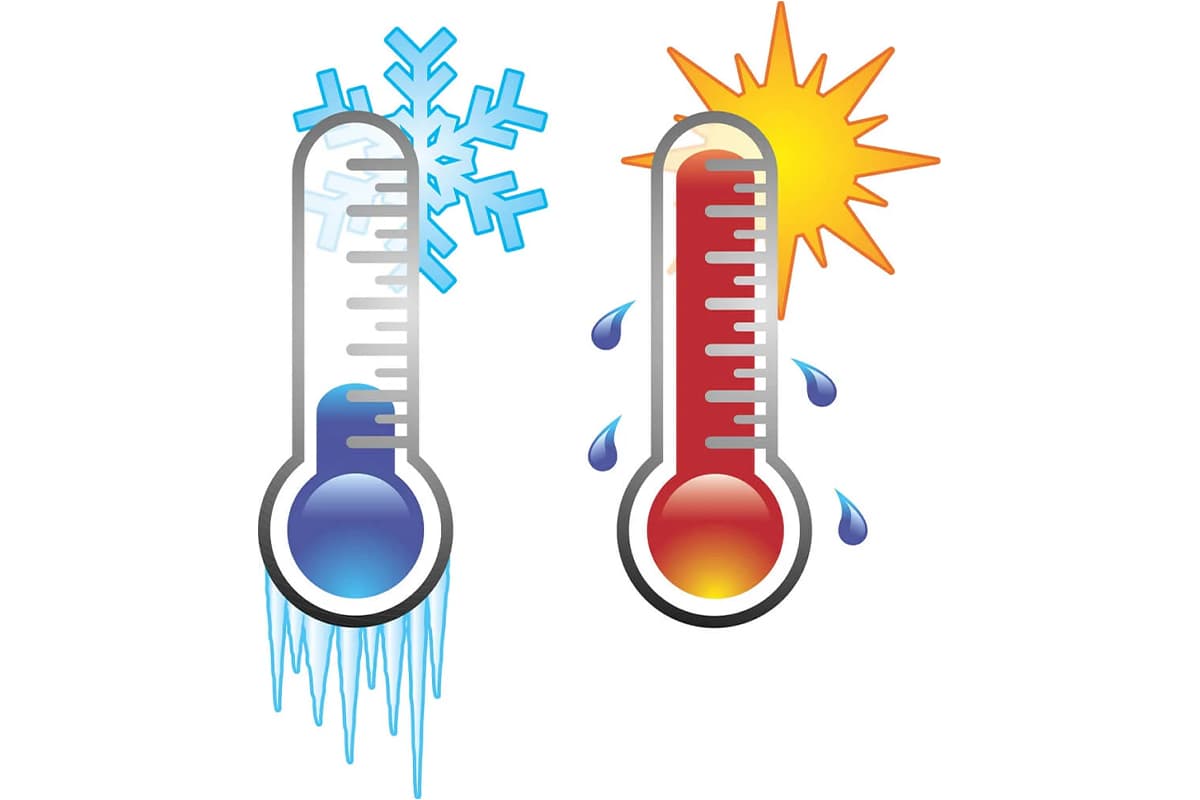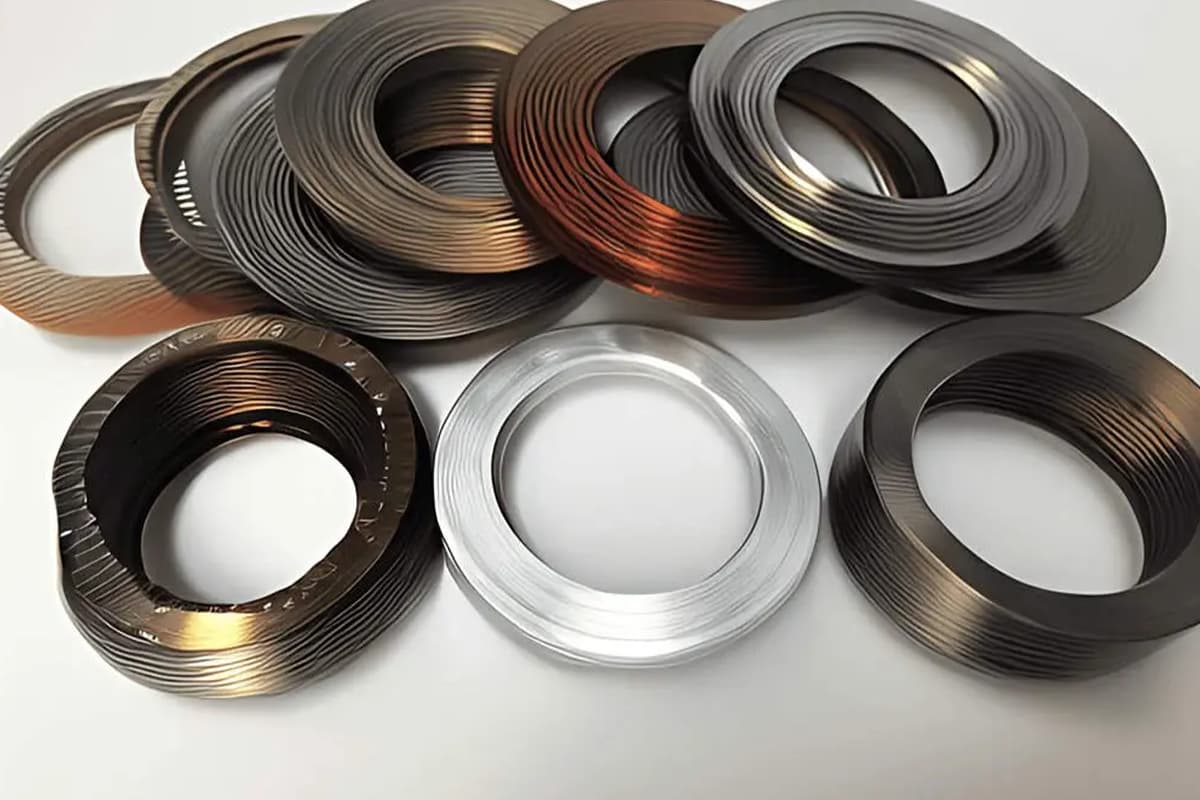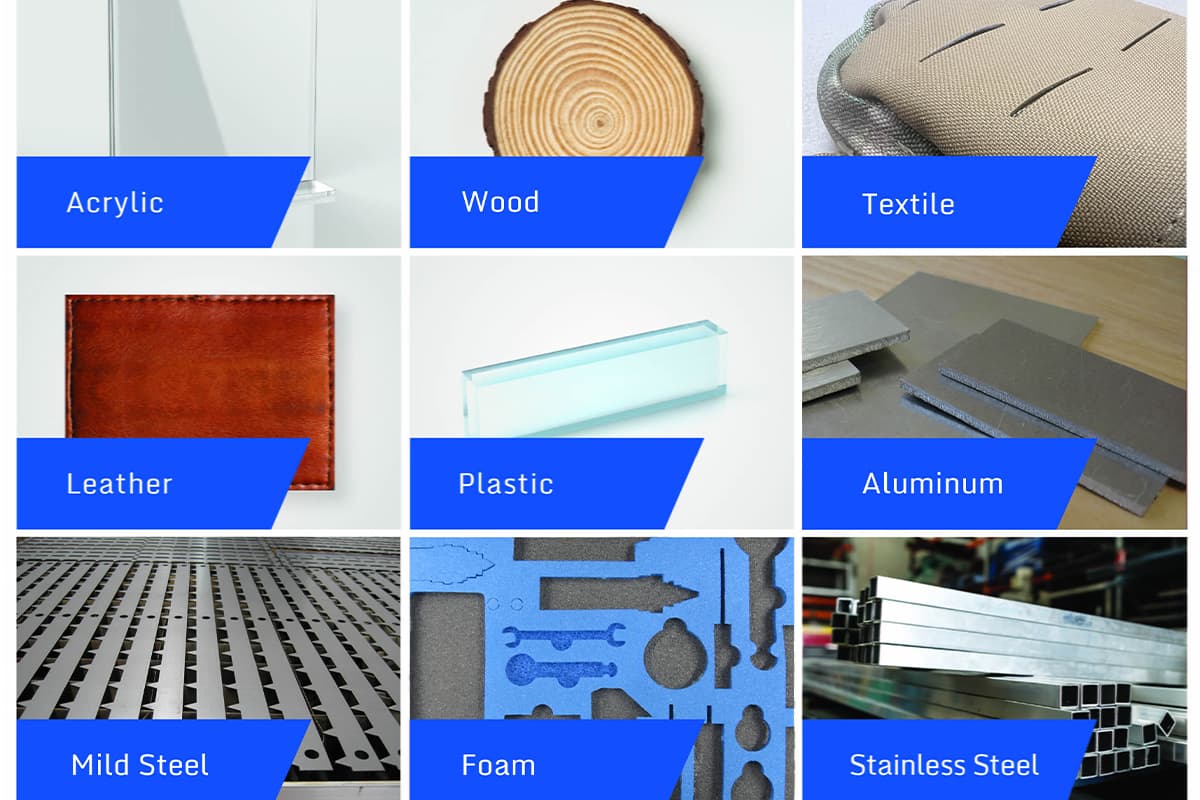I. Introduction
Laser cutting technology has revolutionized the manufacturing and metal processing industries by offering precision, efficiency, and versatility. This method utilizes a high-powered laser beam to cut, engrave, or etch materials with unprecedented accuracy.
The laser beam is focused onto the material, causing it to melt, burn, vaporize, or be blown away by a jet of gas, leaving an edge with a high-quality surface finish.
Temperature control is a critical aspect of laser cutting operations. The performance and efficiency of a laser cutting machine are highly dependent on maintaining the correct operating temperature.
My article will delve into the basics of laser cutting machine temperature, ranging from fundamentals of laser cutting temperature to techniques for managing laser cutting machine temperature.
II. Fundamentals of Laser Cutting Machine Temperature
Optimal Operating Temperature Range
Ideal Ambient Temperature (59°F to 77°F / 15°C to 25°C)
The recommended ambient temperature for laser cutting machines typically falls between 59°F to 77°F (15°C to 25°C). This range ensures optimal performance of the laser cutting machine while minimizing temperature-related issues.
Temperature Limits for Laser Components (below 40-45°C for semiconductors)
The working temperature of semiconductors in cutting machines should be kept below 40-45°C. When room temperature reaches 35°C, the internal temperature of the electrical cabinet can exceed 40°C, potentially affecting the performance and lifespan of critical components.
Laser Types and Their Temperature Requirements
1. CO2 Lasers
CO2 lasers generate significant heat during operation and require efficient cooling systems. They are sensitive to temperature fluctuations and may need more robust temperature control measures compared to other laser types.
2. Fiber Lasers
Fiber lasers generally have better thermal management due to their design. They distribute heat more efficiently along the fiber, making them less susceptible to temperature-related issues.
3. Solid-State Lasers
Solid-state lasers, such as those using YAG (Yttrium Aluminum Garnet) crystals, have specific thermal conductivity requirements. The thermal conductivity of the gain media plays a crucial role in the overall performance of these lasers.
III. How Temperature Affects Laser Cutting Performance
Temperature variations can dramatically affect the quality of the cut and the overall efficiency of the laser cutting process. If the machine overheats, it can lead to several issues, including:

Consequences of Overheating
- Thermal Expansion:Â Excessive heat can cause components of the machine and the material being cut to expand, leading to dimensional inaccuracies and poor fitment of parts.
- Beam Quality Degradation:Â Overheating can affect the quality of the laser beam, resulting in a less focused beam and a reduction in cutting precision.
- Material Damage:Â High temperatures can cause burning, melting, or warping of the material, leading to inferior cut quality and potentially rendering the material unusable.
- Safety Hazards:Â Overheating can pose significant safety risks, including the potential for fires or damage to the machine's components.
Conversely, underheating can also be problematic. If the material and machine are not within the optimal temperature range, it can lead to:
Effects of Underheating
- Incomplete Cuts:Â Insufficient heat may prevent the laser from fully penetrating the material, resulting in incomplete cuts and the need for additional processing.
- Poor Cut Quality:Â Lower temperatures can lead to rough, jagged edges and an overall decline in cut quality.
- Increased Wear and Tear:Â Operating the machine at suboptimal temperatures can increase the wear on components, leading to more frequent maintenance and a shorter lifespan for the equipment.
Temperature Effects on Cut Quality and Precision
- Kerf Width Variations: Temperature fluctuations can cause variations in kerf width, which is crucial for material utilization efficiency. Typical kerf widths range from 0.1mm to 1mm, depending on material properties, laser type, and cutting parameters. High-power fiber lasers can achieve narrower kerfs (0.1-0.3mm) in thin metals, while CO2 lasers may produce wider kerfs (0.2-0.5mm) in thicker materials.
- Edge Quality: Temperature affects the edge quality of laser-cut materials. Excessive heat can lead to edge melting, burrs, or dross formation, while insufficient heat may result in rough or incomplete cuts. Maintaining optimal temperature is crucial for achieving clean, smooth edges.
- Dimensional Accuracy: Temperature variations can significantly impact dimensional accuracy. A study published in the International Journal of Advanced Manufacturing Technology found that temperature fluctuations of just a few degrees could lead to significant deviations in cut quality. Modern laser cutters can achieve tolerances as tight as ±0.1 mm, but this level of precision requires meticulous temperature control and environmental management.
IV. Factors Affecting Laser Cutting Machine Temperature
Maintaining optimal temperature in laser cutting machines is crucial for achieving high-quality cuts and extending the lifespan of equipment. Several factors influence the temperature of a laser cutting machine, and understanding these can help operators take proactive measures to control and optimize the cutting process.
Power Settings and Their Impact on Temperature
The power settings of a laser cutting machine are one of the primary factors affecting its temperature. Higher power settings generate more heat, which can lead to overheating if not properly managed. Conversely, lower power settings may not produce enough heat, leading to suboptimal cuts.
Key Considerations:
- Laser Power Output:Â Adjusting the laser power output to match the material type and thickness is essential. Overpowering can cause burning or melting, while underpowering may result in incomplete cuts. For example, using too high a power setting on thin acrylic can cause it to warp or burn.
- Duty Cycle:Â The duty cycle, meaning how often the laser is active, also influences temperature. A high duty cycle can lead to heat accumulation, while a lower duty cycle allows for cooling periods. For instance, cutting intricate designs with a high duty cycle on wood can cause scorching.
Material Type and Thickness Considerations

Different materials have varying thermal properties, which influence how they absorb and dissipate heat during the cutting process. The thickness of the material also plays a significant role in temperature management.
Material-Specific Factors:
- Metals:Â Metals such as steel and aluminum have high thermal conductivity, meaning they can quickly absorb and dissipate heat. However, thicker metal sheets require higher power settings and longer exposure times, increasing the risk of overheating. When cutting thick steel, it is crucial to adjust the cooling system to prevent overheating.
- Plastics:Â Plastics like acrylic and polycarbonate have lower thermal conductivity and can easily melt or warp under high temperatures. Adjusting the laser parameters to prevent excessive heat buildup is crucial. For instance, cutting 5mm acrylic might require a power setting of 60W and a speed of 20mm/s to avoid burning.
- Wood and Organic Materials:Â These materials are prone to burning and charring. Controlling the laser power and speed can help manage the temperature and avoid damaging the material. For example, cutting 3mm birch plywood might be optimal at 40W power and 15mm/s speed.
- Composites and Specialized Materials:Â These materials may have varying thermal properties depending on their composition. Understanding the specific thermal behavior of each composite is essential for effective temperature control. For example, carbon fiber composites may require specialized cooling techniques to prevent delamination.
Ambient Temperature and Environmental Factors
The temperature of the environment in which the laser cutting machine operates can significantly impact its internal temperature. External factors such as ambient temperature, humidity, and airflow can influence the machine's cooling efficiency.
Environmental Considerations:
- Ambient Temperature:Â High ambient temperatures can reduce the efficiency of cooling systems, leading to increased internal temperatures. Conversely, low ambient temperatures can aid in cooling but may require adjustments to prevent underheating. Consider how changing the ambient temperature in your workspace might affect your laser cutting results.
- Humidity:Â High humidity levels can affect the performance of cooling systems and lead to condensation within the machine, potentially causing electrical issues or corrosion. The ideal relative humidity range for laser cutting machines is typically between 40% and 70%. This range helps maintain optimal performance while minimizing moisture-related issues.
- Airflow:Â Proper ventilation and airflow around the machine are essential for dissipating heat. Ensuring the laser cutting machine is placed in a well-ventilated area with fans can significantly improve heat dissipation. For instance, setting up exhaust fans or air conditioning units can help maintain a stable operating temperature.
V. Optimal Temperature Settings for Different Materials

Metals
Steel
Steel, particularly carbon steel and stainless steel, are primary materials in industrial applications due to their strength and durability. Each type requires specific laser cutting considerations.
- Carbon Steel:
- Thin Carbon Steel (up to 6mm):Â Power: 1.5 kW - 2 kW, Speed: 15mm/s.
- Thick Carbon Steel (above 6mm):Â Power: 2 kW - 3 kW, Speed: 10mm/s.
- Safety Precautions:Â Use protective eyewear and proper ventilation to avoid inhaling metal fumes.
- Stainless Steel:
- Thin Stainless Steel (up to 3mm):Â Power: 1 kW - 1.5 kW, Speed: 20mm/s.
- Thick Stainless Steel (above 3mm):Â Power: 1.5 kW - 3 kW, Speed: 12mm/s.
- Safety Precautions:Â Ensure adequate ventilation and use appropriate PPE (Personal Protective Equipment).
Aluminum
Aluminum's high reflectivity and thermal conductivity present unique challenges.
- Thin Aluminum (up to 3mm):Â Power: 1 kW - 2 kW, Speed: 25mm/s.
- Thick Aluminum (above 3mm):Â Power: 2 kW - 4 kW, Speed: 15mm/s.
- Safety Precautions:Â Use laser systems designed for reflective materials and wear protective eyewear.
Plastics
Acrylic
Acrylic is popular for laser cutting because its clarity allows for precise engravings, and its ease of cutting reduces processing time and material waste.
- Thin Acrylic (up to 5mm):Â Power: 30W - 60W, Speed: 20mm/s.
- Thick Acrylic (above 5mm):Â Power: 60W - 100W, Speed: 10mm/s.
- Safety Precautions:Â Ensure proper ventilation to avoid inhaling fumes and use flame-retardant materials around the cutting area.
Polycarbonate
Polycarbonate is more challenging to cut due to its tendency to discolor and release toxic fumes when overheated.
- Thin Polycarbonate (up to 3mm):Â Power: 20W - 40W, Speed: 25mm/s.
- Thick Polycarbonate (above 3mm):Â Power: 40W - 60W, Speed: 15mm/s.
- Safety Precautions:Â Use adequate ventilation and a fume extraction system.
Wood and Organic Materials
Wood and organic materials like plywood and MDF are used in laser cutting for artistic and construction purposes. These materials can burn or char easily, necessitating precise control over cutting parameters.
Plywood
- Thin Plywood (up to 3mm):Â Power: 40W - 60W, Speed: 15mm/s.
- Thick Plywood (above 3mm):Â Power: 60W - 100W, Speed: 10mm/s.
- Safety Precautions:Â Ensure proper ventilation and use flame-retardant materials around the cutting area.
MDF (Medium-Density Fiberboard)
- Thin MDF (up to 3mm):Â Power: 50W - 70W, Speed: 12mm/s.
- Thick MDF (above 3mm):Â Power: 70W - 100W, Speed: 8mm/s.
- Safety Precautions:Â Use adequate ventilation to manage the release of formaldehyde and other fumes.
Composites and Specialized Materials
Composites and specialized materials require customized temperature settings for effective cutting.
Carbon Fiber Composites
Carbon fiber composites are used in high-performance applications but require careful cutting to avoid delamination.
- Thin Composites (up to 3mm):Â Power: 1 kW - 2 kW, Speed: 20mm/s.
- Thick Composites (above 3mm):Â Power: 2 kW - 3 kW, Speed: 15mm/s.
- Safety Precautions:Â Use proper ventilation and wear protective eyewear.
Kevlar
Kevlar's high tensile strength and heat resistance make it difficult to cut cleanly. Specific laser settings are necessary to avoid fraying, which can compromise the material's structural integrity.
- Thin Kevlar (up to 3mm):Â Power: 1 kW - 1.5 kW, Speed: 25mm/s.
- Thick Kevlar (above 3mm):Â Power: 1.5 kW - 2 kW, Speed: 15mm/s.
- Safety Precautions:Â Ensure proper ventilation and wear protective clothing to avoid contact with frayed fibers.
VI. Techniques for Managing Laser Cutting Machine Temperature
Cooling Systems
Water Cooling
Water cooling is one of the most effective methods for managing the temperature of laser cutting machines. Water cooling systems in laser cutting machines use a closed-loop circulation of coolant (typically distilled water) to remove heat from critical components.
The coolant absorbs heat from the laser tube and other heat-generating parts, then passes through a heat exchanger to dissipate the heat before recirculating.
Advantages:
- High Efficiency:Â Water has a high thermal capacity, making it excellent for absorbing large amounts of heat.
- Consistency:Â Provides stable and consistent cooling, essential for high-power laser operations.
- Scalability:Â Suitable for various laser types and power levels.
Implementation:
- Water Chillers:Â These units circulate chilled water through the laser machine, maintaining a constant temperature

Maintenance:
- Regular inspection of coolant levels and quality
- Periodic replacement of coolant (distilled water) to prevent contamination
- Checking for leaks in the cooling system
- Cleaning or replacing filters in the cooling loop
- Monitoring and maintaining proper flow rates and pressure
Air Cooling
Air cooling systems use fans and heat exchangers to dissipate heat. While not as efficient as water cooling, air cooling is simpler and more cost-effective for lower-power laser systems. Suitable for lower-power laser systems (up to 60 watts).
- Advantages:
- Simplicity:Â Easier to install and maintain compared to water cooling systems.
- Cost-Effective:Â Lower initial setup and maintenance costs.
- Limitations:
- Limited Cooling Capacity: Ineffective for high-power lasers, leading to potential overheating.
- Ambient Temperature Limitation: Unable to cool below the surrounding room temperature.
- Inefficiency for Continuous Operation: Less efficient for sustained high-power use.
- Size Requirements: May need larger cooling units to ensure sufficient heat dissipation.
- Implementation:
- Fans and Blowers:Â Install high-capacity fans to enhance airflow around the laser source and cutting area.
- Heat Exchangers:Â Use heat exchangers to improve the efficiency of air cooling systems. A heat exchanger transfers heat from the laser machine to the surrounding air, improving cooling efficiency.
Thermal Sensors and Monitoring Systems
Thermal Sensors
Thermal sensors are installed at key points within the laser cutting machine to monitor temperatures continuously.
- Types:
- Thermocouples:Â Measure temperature at specific points, providing accurate and reliable data.
- Infrared Sensors:Â Non-contact sensors that measure surface temperatures, ideal for monitoring moving parts.
- Implementation:
- Placement:Â Install sensors on the laser source, cutting head, and other critical components. For example, a major manufacturer reduced downtime by 30% by strategically placing thermal sensors.
- Integration:Â Connect sensors to the machine's control system for real-time monitoring and alerts.
Monitoring Systems
Advanced monitoring systems analyze data from thermal sensors and provide actionable insights to maintain optimal temperatures.
- Features:
- Real-Time Alerts:Â Notify operators of temperature deviations, allowing for immediate corrective action. In a case study, Factory Z prevented a major breakdown by receiving timely alerts from their monitoring system.
- Data Logging:Â Record temperature data for analysis and preventive maintenance planning.
- Automated Controls:Â Adjust cooling systems and laser parameters automatically based on sensor data.
Adjusting Laser Beam Parameters
Frequency
The frequency of the laser beam affects how energy is delivered to the material. Adjusting the frequency can help manage the heat input and prevent overheating.
- High Frequency:Â Suitable for thinner materials, providing smooth cuts with minimal heat buildup.
- Low Frequency:Â Better for thicker materials, allowing more time for heat dissipation between pulses.
Speed
Cutting speed directly influences the amount of heat generated during the process. Optimizing the speed ensures that the material does not accumulate excessive heat.
- Higher Speed:Â Reduces the exposure time of the laser beam, minimizing heat buildup and preventing material damage.
- Lower Speed:Â Increases heat input, necessary for cutting thicker materials but requires efficient cooling.
Power
Laser power settings must be carefully calibrated to match the material's thermal properties and thickness.
- High Power:Â Necessary for cutting thick or high-density materials but requires robust cooling systems to manage the increased heat.
- Low Power:Â Suitable for thin or heat-sensitive materials, reducing the risk of overheating and material damage.
VII. FAQs

1. What are the Signs of Overheating in a Laser Cutting Machine?
Signs of overheating in a laser cutting machine include reduced cutting precision, increased error rates, unexpected shutdowns, and warning signals from temperature monitoring systems. Physical signs may include unusual noises from the cooling system or visible warping and discoloration of machine components.
2. What are the common methods for cooling laser cutting machines?
Common cooling methods for laser cutting machines include water cooling and air cooling systems. Water cooling systems are often preferred for high-power laser cutters as they effectively dissipate heat through a closed-loop system.
Air cooling is suitable for lower-power systems and typically involves fans or radiators to maintain acceptable temperature ranges. Both methods help ensure consistent operational performance and prevent overheating-related malfunctions.
3. Can Ambient Temperature Affect the Performance of Laser Cutting?
Yes, ambient temperature has a significant impact on the performance of laser cutting machines. Too high or too low ambient temperatures can upset the thermal balance of the machine, causing issues like condensation, electrical shorts, or thermal expansion. It is advisable to operate the machine in a temperature-controlled environment to avoid these problems.
4. Can temperature control affect the power consumption of laser cutting machines?
Yes, effective temperature control can impact the overall power consumption of laser cutting machines. Efficient cooling systems and managed temperatures allow the machine to operate within optimal conditions, potentially reducing the energy required to maintain those conditions.
By preventing overheating, less energy is wasted on correcting errors or compensating for temperature-related issues, thus resulting in better energy efficiency.
2 Inch Small Open Mill,2 Inch Silica Gel Open Mill,2 Inch Automatic Glue Turning Machine,2 Inch Oil Heating Open Mill,2 Inch Water Cooled Open Mill
Dongguan Zhenggong Electromechanical Equipment Technology Co., Ltd , https://www.mixer-cn.com